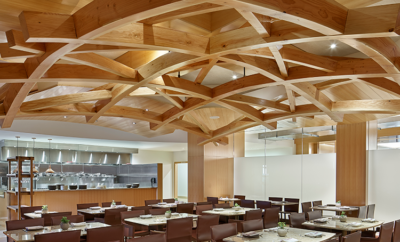 COURTESY PHILLIPS/PHILLIPS.COM
COURTESY PHILLIPS/PHILLIPS.COM
Design
Lighting the Way: The Best Early Modern Lamps
When we consider modern design, the emphasis is often on the decade or so following World War II. The reasoning, which is justified, can be condensed into a few critical ideas, including the necessity of rebuilding (and re-furnishing) Europe, the enhanced abilities and possibilities of mass-production, and a general philosophical inclination toward the new and the future. Too often, it’s as if there is an invisible frontier that excludes earlier objects.
In fact, early modernism is ripe for discovery. Many of the lights fixtures featured here are remarkably under-appreciated or even unknown, even though their aesthetic innovations were repeatedly duplicated or interpreted in succeeding decades, up to today. I suspect that even readers familiar with certain models will be surprised at how early their designs date. None of the designers are obscure, and their contributions to either design or architecture of the twentieth century is considered. Several of the lights boast new technologies (notably bulbs), materials, or production possibilities of the day.
Perhaps the key factor uniting the examples featured is that they are still remarkable today, whether isolated on a museum plinth or in a contemporary interior. They all reflect a fierce rejection of the reigning styles of their era and the assertion of a new aesthetic sensibility, often accomplished “simply” by dismissing ornamentation. All have an overt sculptural presence even if the forms are simple, the materials are modest, or the surfaces are unadorned.
Of course this list is highly subjective and certainly not exhaustive. In the end, it is about a desire to retreat behind the 1945 frontier and illuminate a group of iconic, or deserve-to-be-iconic, light fixtures from the first half of the twentieth century.
Gerrit Rietveld (1888–1964) Hanging Lamp (or Ceiling Light) 1924

COURTESY PHILLIPS/PHILLIPS.COM
FOR THOSE UNFAMILIAR with Rietveld’s work it can be difficult to accept that this piece is nearly one hundred years old. Rietveld trained as a cabinetmaker and opened a design studio in 1917. He joined the De Stijl group a year later, dedicated to its principles of rejecting the Amsterdam school’s penchant for decorative excess. His Hanging Lamp epitomizes the group’s philosophy, dismissing any extraneous decoration or structure. The hyper-minimal aesthetic is the result of presenting the light’s essential organs rather than having a casing to conceal or embellish them. It is truly the antithesis of art nouveau, as there is no reference to nature. Instead, the light acts almost as a scientific demonstration: here are the ingredients (ceiling plate, corded wires, and bulbs) that create indoor electric illumination.
The first version of the Hanging Lamp (1922) was commissioned for a doctor’s clinic in the Netherlands. It was composed of four light tubes—two vertical and two horizontal. The second version, with three tubes, was created in 1924 for the Rietveld-Schröder House in Utrecht. The difference between three and four tubes was not an aesthetic consideration but a regional necessity. In the early twentieth century, wattage in the Netherlands was not universal or standardized; different areas had different electrical requirements, leading to the change in the design. The three-tube version was put into production and is still available today.











